Witchcraft Medicine: Healing Arts, Shamanic Practices, and Forbidden Plants (67 page)
Read Witchcraft Medicine: Healing Arts, Shamanic Practices, and Forbidden Plants Online
Authors: Claudia Müller-Ebeling,Christian Rätsch,Ph.D. Wolf-Dieter Storl


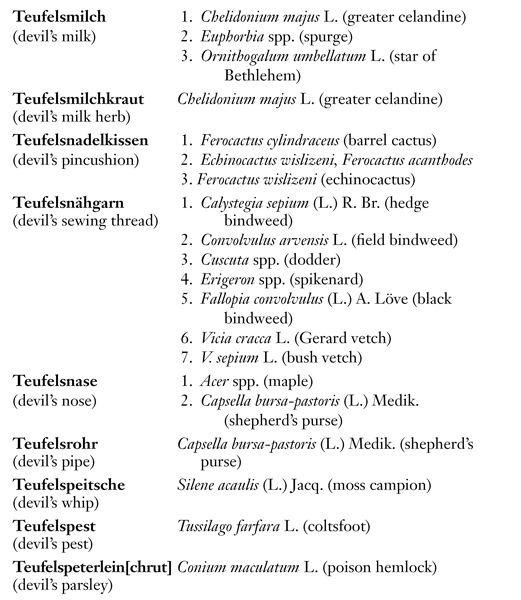
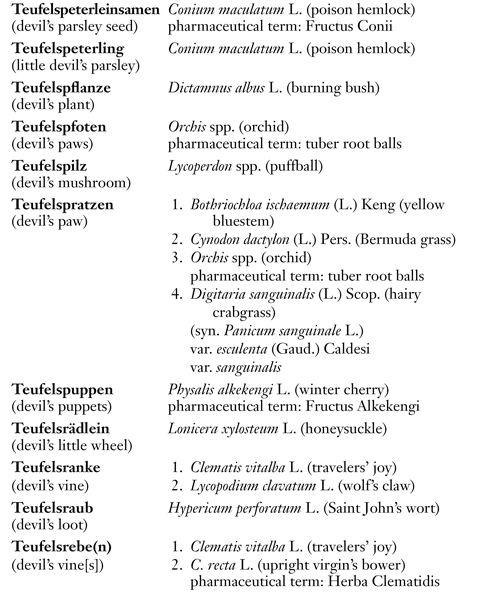
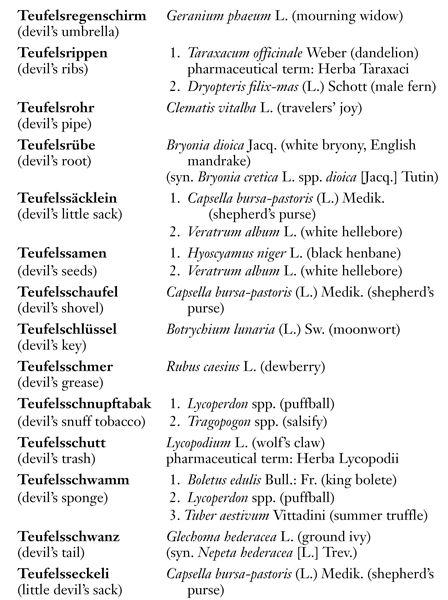
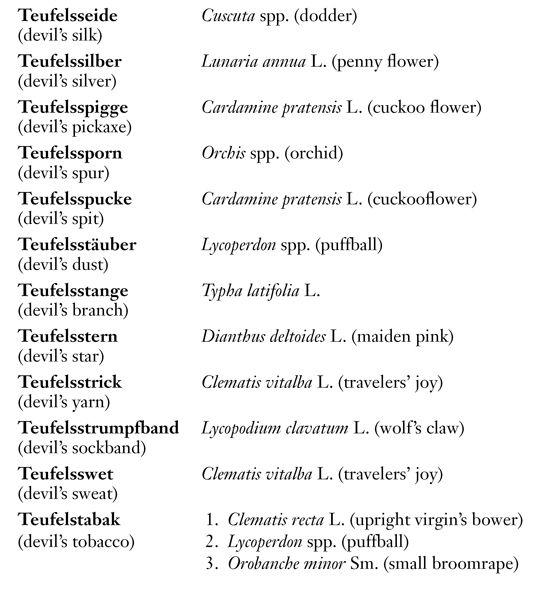

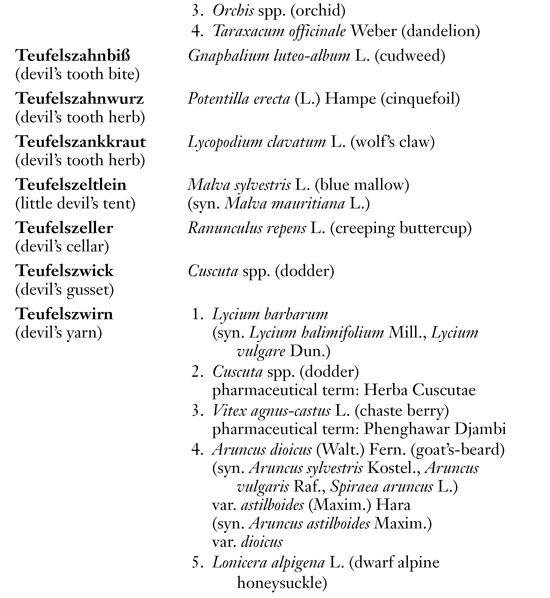

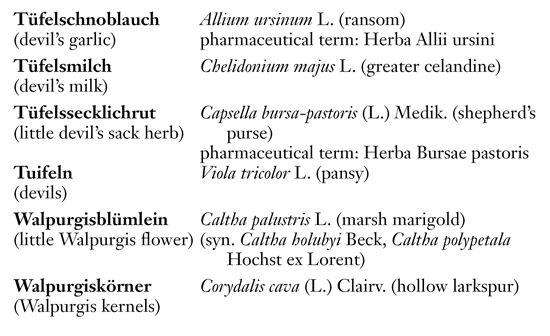
1. The Wild Earth and Its Children
a
The Goetheanum in Basel, Switzerland, was designed by Rudolf Steiner (1861–1925) as a place to teach the doctorines of his spiritual, mystical, and pedagogical system known as anthroposophy. (Trans.)
b
The costumed, masked participants in the Shrove Tuesday processions. (Trans.)
c
The procession celebrating the Feast of Corpus Christi. (Trans.)
d
Grain demon of folk belief. (Trans.)
e
Literally, “midsummer straw”; more precisely, “midsummer bedstraw.” (Trans.)
f
Buhl
= lover;
Teufel
= devil. A Buhlteufel is an incubus. (Trans.)
g
From Halliwell’s
Popular Rhymes
cited in Maude Grieve’s
A Modern Herbal,
p. 864. Originally published in 1938, London: Jonathan Cape Ltd.; this edition published 1994, London: Tiger Books.
h
A version from the British Isles uses the same method: “Yarroway, Yarroway, bear a white blow; If my love love me, my nose will bleed now.” From Maude Grieve,
A Modern Herbal
(1931; reprint, London: Tiger Books, 1994), 864. (Trans.)
i
Brechtelzeit is the time following Michaelmas when the women beat the hemp or flax fibers in preparation for spinning. (Trans.)
2. The Old Woman in the Hedgerow
a
The
disir
(singular
dis
) are divine female guardian spirits in Old Norse sagas.
Dis
also means “woman” or “lady.” (Trans.)
b
Such charms or spells were usually used for medicinal purposes in folk practices and often contained remnants of heathen beliefs. (Trans.)
c
The
idisi
are female beings mentioned in the first Merseburg charm. They are a kind of Valkyrie.
Idis
is the Old Saxon word for a respected woman. It is possible that the idisi are related to the Old Norse disir. From Karl Simrock,
Dictionary of Northern Mythology
(Cambridge, England: Brewer, 1993), p. 171. (Trans.)
3. The Witch As Shaman
a
These are processions to bless the fields and meadows. (Trans.)
b
An oblong, shallow bowl used for kneading bread dough. (Trans.)
4. Midwives: Fertility and Birth
a
The
Salige Frau
is not human, but instead a divinity who lives in the mountains. She sometimes appears to people and occasionally marries mortal men. She is well known throughout the Alps. (Trans.)
b
Hebe
= to lift,
Ahnin
= ancestor;
Hebe-Ahnin
means “the lifting ancestor.” (Trans.)
5. The Mother of Death
a
Woman who cared for the dead. (Trans.)
6. Witchcraft Medicine: The Legacy of Hecate
a
Translation by Frederick Ahl,
Seneca: Three Tragedies
(Ithaca and London: Cornell University Press, 1986).
b
According to Apollonius,
ichor
is liquid that flows in the veins of gods. (Trans.)
c
In the German translation of
Macbeth
henbane is used in place of howlet’s wing. (Trans.)
7. Images of Witches: The Demonization of Nature’s Healing Powers
a
The Eddas are a collection of prose and poetry from medieval Iceland that detail the mythic material of pre-Christian Scandinavia. (Trans.)
b
The
Hexenhammer
is the German title of the
Malleus Maleficarum
[Hammer of the Witches], a tract written in Latin by two Dominican scholars, first printed in Cologne in 1486. It is without a doubt the most influential and sinister work on demonology ever written, and is the source material and inspiration for all other treatises on witchcraft. The
Malleus Maleficarum
sought to codify folklore as black magic and relate it to the Church dogma on heresy. In particular the tract cast women in a negative light, stating (falsely), for instance, that
femina
derives from
fe
= “faith” and
minus
= “less.” The
Malleus Maleficarum
provided the primary source material for the Inquisition. Interestingly, the tract was also accepted as an authority by the Protestants, who otherwise opposed the Inquisition. It was reprinted numerous times in German, French, English, and Italian and was used as a textbook for witch-hunters into the seventeenth century. It remains in print to this day, albeit as a curiosity. (Trans.)
c
Joan Halifax,
Shamanic Voices: A Survey of Visionary Narratives
, New York: E. P. Dutton, 1979, 143. (Trans.)